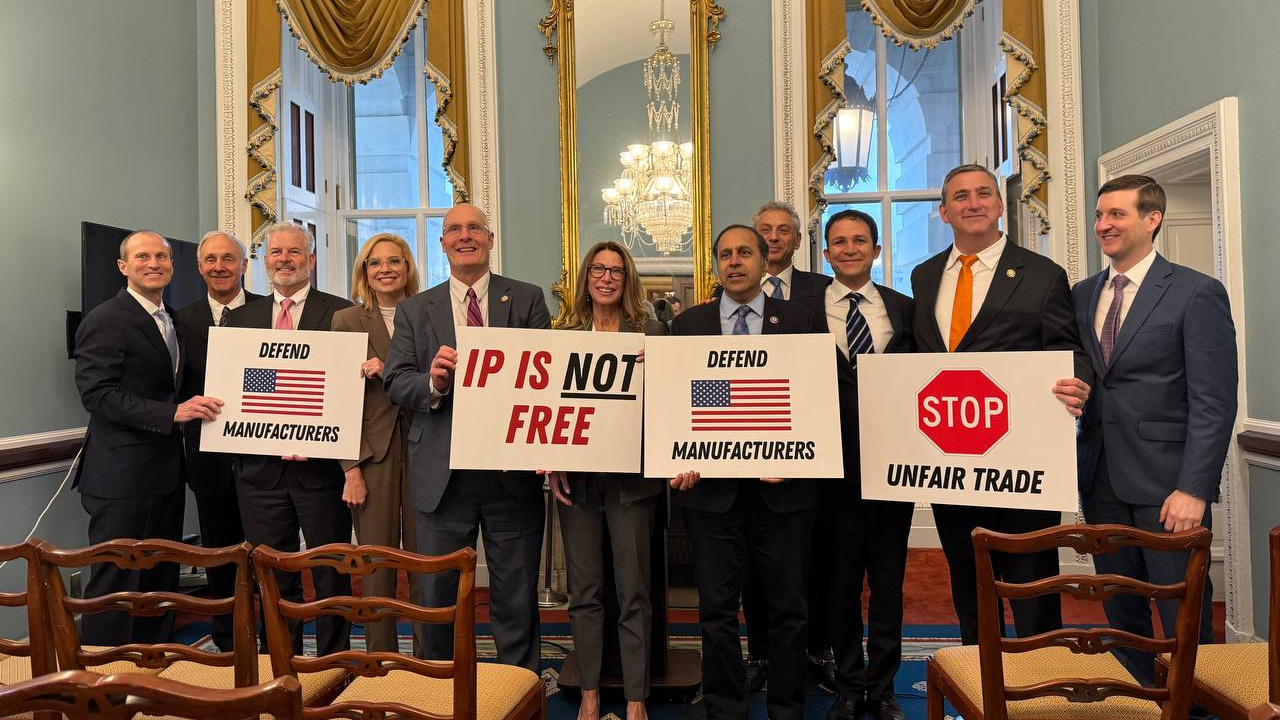Widening Trade Deficit Contrasts with Strong Jobs Picture, as China Trade Deficit Sets Another Record
The federal government’s employment report for October showed the US economy continues to perform strongly, with job growth of 250,000 in the month, including 32,000 added manufacturing jobs. Unemployment continues to be low and the labor force participation rate is edging up.
However, monthly US trade figures for September were released today by the Department of Commerce, and the data on the trade front once again proved disappointing. America’s international trade deficit in goods and services reached $54.0 billion, up 1.0% from August and 21% above the year-ago September figure. On a year-to-date basis, the overall data makes for equally gloomy reading, standing at $445.2 billion—which is up 10.1% over the comparable period in 2017. On that basis, the US is headed for a 2018 trade deficit of $607 billion, the highest since 2008.
Once again, our monthly bilateral goods deficit with China set a new record, of $40.2 billion, 16.6% worse than the year-ago September level of $34.5 billion. Bad news also came from the advanced technology sector, where our September deficit rose 1.9% to $12.7 billion. China accounted for 98% of our September advanced technology deficit.
“The bilateral trade picture with China continues to worsen,” said CPA Research Director Jeff Ferry. “During a week in which President Trump met with Chinese President Xi to talk trade, the US Justice Department indicted a Chinese microchip company and three individuals for intellectual property theft, and the FBI said that ‘nearly every one’ of their 56 field offices have ongoing espionage investigations that ‘lead back to China,’ the urgency to fix our trading relationship with China could not be greater. There are signs that the tariffs are beginning to boost demand for US production in individual industries, but a macroeconomic solution, and a legal solution, are urgently needed if we are ever to see free and fair trade with China.”
Our second largest bilateral deficit was once again with Mexico, at $7.7 billion in September, moderating from August’s $8.7 billion level. However, on a year-to-date basis, our deficit with Mexico is 13% worse than the 2017 period, suggesting we are on track for a record $80 billion bilateral deficit with Mexico this year. (All bilateral deficit data refers to goods trade—and excludes services.)
Our third largest bilateral deficit in September was with Germany, at $4.8 billion, a 19% improvement over the August level. Once again though, the January to September figure is worse than a year ago, contributing to our worsening overall trade deficit in 2018. Our fourth largest bilateral deficit was with Japan, at $3.9 billion. Our year-to-date Japan deficit is 2% better than the 2017 period, so our full-year deficit Japan may come in slightly better than last year’s $69 billion figure.
Turning to product areas, our advanced technology deficit may be the most worrying category in the entire Department of Commerce report. On a year-to-date basis America’s advanced technology deficit stands at $92.9 billion, 31% worse than the comparable period a year ago and likely to come in at a record $145 billion for the year. Within advanced technology, our deficit continues to worsen in information and communications (including computers, smartphones, and internet equipment), and life sciences. Our deficit in biotechnology products has more than doubled, reaching $11.3 billion on a year to date basis. These are all sectors where the US often leads the world in innovation, inventions, and brand names, but companies have chosen to manufacture the products outside our borders. Aerospace is the largest positive contributor to advanced technology trade, racking up an $8.2 billion surplus in September, 15% better than the August figure.
Our deficit in automotive vehicles, parts, and engines improved by 4% in September to—$18.2 billion due chiefly to a $600 million decline in automotive imports, to $31.1 billion. Our imports of cellphones rose by 3.3% to $9.8 billion in September. On a year-to-date basis, cellphone imports are up 6.5%, to $82.4 billion.
Agricultural products have attracted attention as China has implemented tariff retaliation against soybeans and other US exports. Soybean exports fell in September to $1.79 billion, but on a year-to-date basis, soybean exports, at $23.1 billion, are up 30% over the comparable period in 2017. Corn exports followed a similar pattern, down 6% in September at $1.08 billion, but up 25% year-to-date to $10.3 billion.
“The Trump administration’s policies to confront China and reduce our trade with a nation that breaks all the rules of free and fair trade is a powerful step in the right direction,” Ferry said. “But our trade deficit continues to worsen, with negative consequences for manufacturing industry, our technology leadership, and the living standards of ordinary people. More needs to be done. With the dollar’s value up 6% since April, an important step forward would be to take action to bring down the dollar, and provide competitive benefits for our farmers, manufacturers, and workers.”












